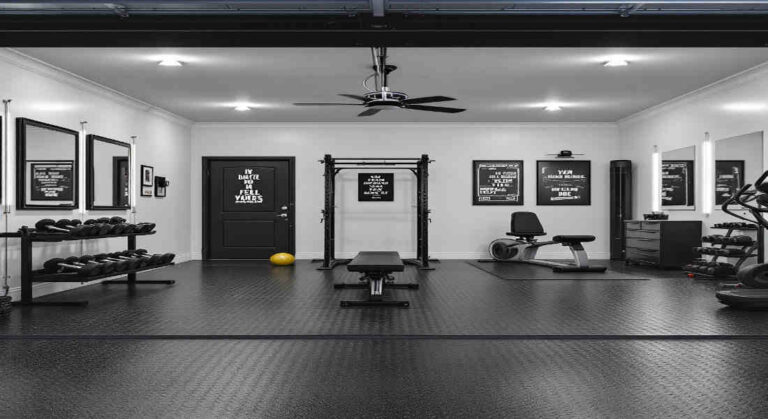Do you want to work out in the comfort of your home but don’t know where to start? What if I told you that the perfect location for your dream gym is right under your nose—or rather, in your garage? Converting your garage into a home gym is an excellent way to make the most of unused space while creating a personal workout oasis.
Why Turn Your Garage into a Gym?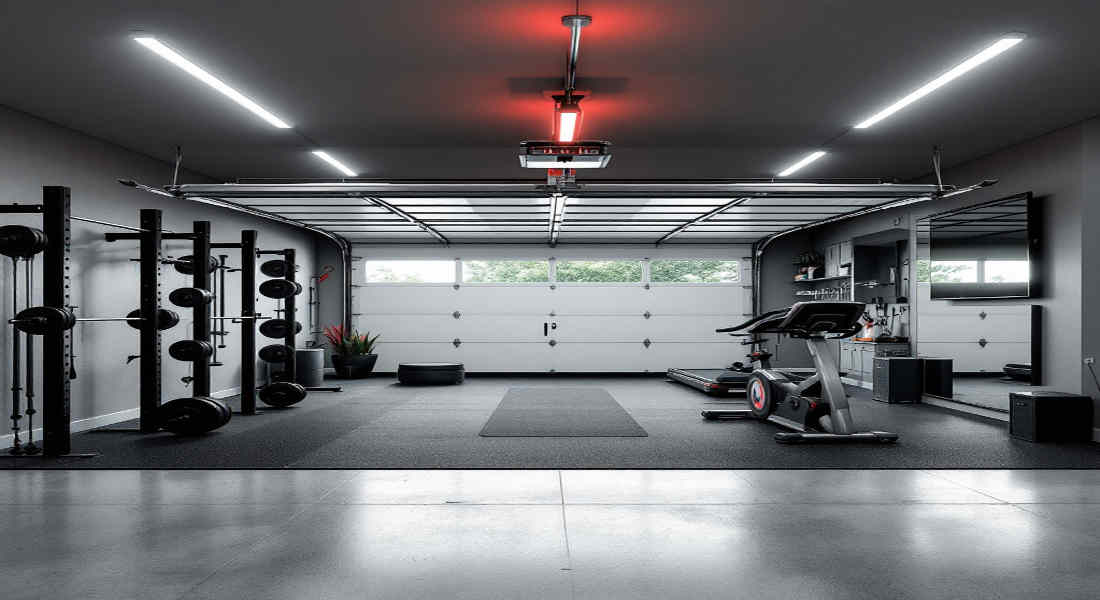
Before diving into the transformation process, let’s look at why converting your garage into a gym is worth the effort.
Convenience and Privacy
One of the biggest perks of a home gym is the convenience. No more driving to the gym, waiting in line for machines, or dealing with crowded spaces. Your garage gym offers you privacy, allowing you to focus on your fitness goals without distractions.
Cost Savings
Gym memberships can be expensive, especially when factoring in long-term costs. By investing in a garage gym, you’re making a one-time investment that will save you money in the long run. Plus, you can build your gym over time, spreading out costs to fit your budget.
Customization
When you create a home gym, you have full control over the layout, equipment, and design. Whether your focus is strength training, yoga, or cardio, your garage gym can be tailored to meet your specific needs.
Time-Saving
Say goodbye to wasted time commuting to and from the gym. With a garage gym, you can fit workouts into your schedule seamlessly. Even quick 20-minute sessions become more doable when the gym is just steps away.
Maximizing Your Garage Space
Garages are often underutilized and cluttered. Transforming yours into a gym not only improves its utility but also enhances your home’s value. Garages are built with durable flooring and open layouts, making them an ideal space for a workout zone.
Assess and Prepare Your Garage Space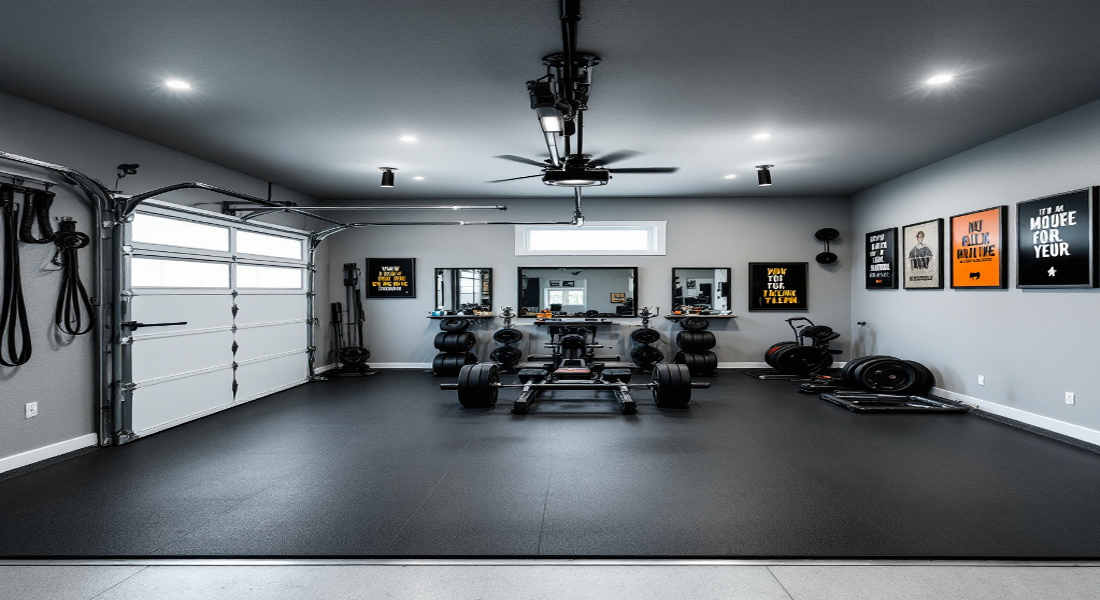
The first step in turning your garage into a gym is to assess the space and prepare it for its new purpose.
Yu may also read (home value the garage advantage).
Measure and Evaluate the Space
Start by measuring your garage’s dimensions. Identify obstacles such as shelves, heaters, or large items that might need to be relocated. This will help you understand how much usable space you have for your gym equipment.
Declutter and Clean
A cluttered garage won’t provide the right environment for a gym. Declutter the space by removing unnecessary items and organizing the rest. Give the area a deep clean to create a fresh and inviting workout space.
Check Lighting and Ventilation
Garages often lack proper lighting and ventilation. Consider adding brighter lights or installing windows for natural light. For ventilation, you may need a fan, or if the room gets too hot or cold, think about adding heating or cooling systems.
Electrical Outlets and Upgrades
Assess the availability of electrical outlets. If you plan to use equipment like treadmills or install a sound system, ensure you have enough outlets or consult an electrician for upgrades.
Plan Your Garage Gym Layout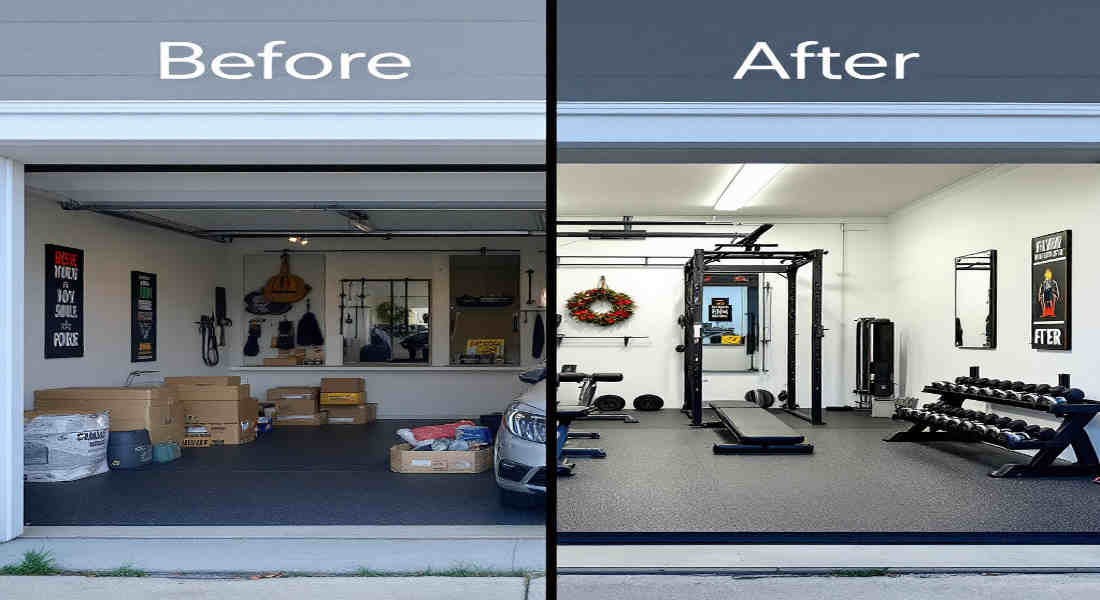
A well-thought-out layout ensures you use your garage space efficiently.
Create a Floor Plan
Sketch a rough floor plan of your garage. Divide the space into zones for different workout types, such as cardio, strength training, and stretching. This helps you visualize the layout and avoid overcrowding.
Prioritize Space-Saving Equipment
Consider equipment that saves space and serves multiple purposes, such as foldable benches, wall-mounted racks, or resistance bands. This way, you can maximize the space without sacrificing functionality.
Use Visualization Tools
If you’re tech-savvy, use software tools like RoomSketcher or online gym planners to create a digital layout. This can help you experiment with different arrangements before committing to one.
Flooring and Insulation
Proper flooring and insulation are critical for comfort and safety in your garage gym.
Choose Durable Flooring
Garage floors are often concrete, which isn’t ideal for workouts. Protect the floor and your joints by adding rubber mats, interlocking tiles, or vinyl flooring. These materials are non-slip, durable, and easy to clean.
Flooring Option Benefits Cost Range
Rubber Mats Non-slip, shock-absorbing $2–$4 per square foot
Interlocking Tiles Easy installation, customizable size $3–$5 per square foot
Vinyl Flooring Durable, moisture-resistant $1.50–$3 per square foot
Insulate for Comfort
Garages can get uncomfortably hot in summer and freezing in winter. Insulate the walls, ceiling, and garage door to maintain a consistent temperature. This makes your gym usable year-round.
Heating, Cooling, and Ventilation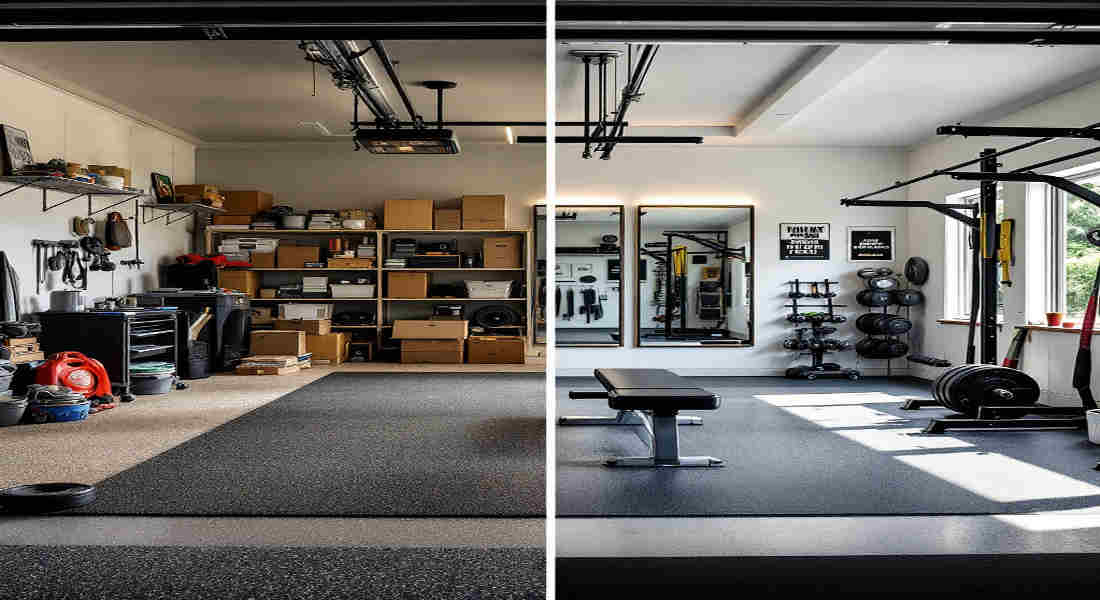
Maintaining a comfortable temperature in your garage gym is essential for enjoyable workouts.
Heating and Cooling Solutions
Depending on your climate, you may need a portable heater, air conditioner, or HVAC system. Choose energy-efficient options to keep utility bills in check.
Ventilation
Good ventilation prevents humidity and mold issues. Install a fan, open windows, or use a dehumidifier to ensure proper airflow.
Selecting Essential Gym Equipment
Choosing the right equipment is key to making your garage gym functional and versatile.
Start with the Basics
Begin with equipment that matches your fitness goals. For most people, this includes:
- Dumbbells or kettlebells
- A treadmill, a stationary bike, or a rowing machine
- A yoga mat or stretching mat
Invest in Multi-Functional Equipment
Space-saving equipment like adjustable dumbbells, resistance bands, or a compact home gym system can provide a full-body workout without taking up much room.
Upgrade Over Time
You don’t need to buy everything at once. Start with the essentials and gradually add more equipment as your budget allows.
Storage and Organization
A well-organized gym makes workouts more enjoyable and efficient.
Utilize Wall Space
Install wall-mounted racks, hooks, or pegboards to store equipment like resistance bands, jump ropes, or yoga mats. This keeps the floor clear and maximizes space.
Shelving and Bins
Use sturdy shelves or storage bins for heavier items like dumbbells or kettlebells. Labeling bins can help keep things organized.
Safety Considerations
Safety should be a top priority in your garage gym.
Electrical and Equipment Safety
Ensure all electrical outlets are properly wired and can handle the load of your equipment. Regularly inspect machines for wear and tear.
Emergency Preparedness
Keep a first aid kit handy and ensure you have a phone nearby in case of emergencies.
Personalize Your Garage Gym
Finally, make your gym a space you love spending time in.
Add Motivational Decor
Hang posters, add mirrors, or paint the walls in a color that energizes you.
Incorporate Technology
Install a sound system, use fitness apps, or set up a TV for virtual workouts.
Budgeting Your Garage Gym Transformation
Set a Realistic Budget
Determine how much you’re willing to spend and prioritize essentials.
Cost-Saving Tips
- Buy second-hand equipment
- DIY projects (e.g., building your own storage)
- Shop sales or online marketplaces
You may also read (5 best materials for your home garage roof).

